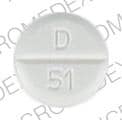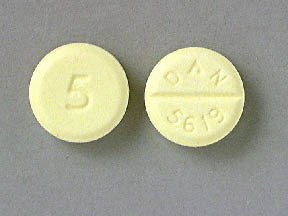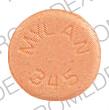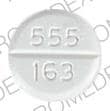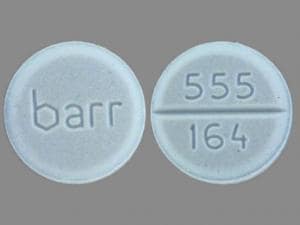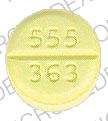Boxed Warning
Risks from concomitant use with opioids
Concomitant use of benzodiazepines and opioids may result in profound sedation, respiratory depression, coma, and death. Reserve concomitant prescribing of these drugs for use in patients for whom alternative treatment options are inadequate. Limit dosages and durations to the minimum required. Follow patients for signs and symptoms of respiratory depression and sedation.
Dosage Forms
Excipient information presented when available (limited, particularly for generics); consult specific product labeling.
Concentrate, Oral:
diazePAM Intensol: 5 mg/mL (30 mL) [contains alcohol, usp; unflavored flavor]
Generic: 5 mg/mL (30 mL)
Gel, Rectal:
Diastat AcuDial: 10 mg (1 ea); 20 mg (1 ea) [contains alcohol, usp, benzoic acid, sodium benzoate]
Diastat Pediatric: 2.5 mg (1 ea) [contains benzoic acid, benzyl alcohol, propylene glycol, sodium benzoate]
Generic: 2.5 mg (1 ea); 10 mg (1 ea); 20 mg (1 ea)
Liquid, Nasal:
Valtoco 10 MG Dose: 10 mg/0.1 mL (1 ea) [contains alcohol, usp]
Valtoco 5 MG Dose: 5 mg/0.1 mL (1 ea) [contains alcohol, usp]
Liquid Therapy Pack, Nasal:
Valtoco 15 MG Dose: 7.5 mg/0.1 mL (1 ea) [contains alcohol, usp]
Valtoco 20 MG Dose: 10 mg/0.1 mL (1 ea) [contains alcohol, usp]
Solution, Injection:
Generic: 5 mg/mL (2 mL, 10 mL)
Solution, Oral:
Generic: 5 mg/5 mL (500 mL)
Solution Auto-injector, Intramuscular:
Generic: 10 mg/2 mL (2 mL)
Tablet, Oral:
Valium: 2 mg, 5 mg, 10 mg [scored]
Generic: 2 mg, 5 mg, 10 mg
Pharmacology
Mechanism of Action
Binds to stereospecific benzodiazepine receptors on the postsynaptic GABA neuron at several sites within the central nervous system, including the limbic system, reticular formation. Enhancement of the inhibitory effect of GABA on neuronal excitability results by increased neuronal membrane permeability to chloride ions. This shift in chloride ions results in hyperpolarization (a less excitable state) and stabilization. Benzodiazepine receptors and effects appear to be linked to the GABA-A receptors. Benzodiazepines do not bind to GABA-B receptors.
Pharmacokinetics/Pharmacodynamics
Absorption
Oral: Well absorbed (>90%); delayed and decreased when administered with a moderate fat meal
Rectal: Well absorbed
Distribution
Vd: IV: 1.2 L/kg (range: 0.6 to 2 L/kg) (Greenblatt 1989a); Oral: 1.1 L/kg (range: 0.6 to 1.8 L/kg (Greenblatt 1989b); Rectal: 1 L/kg
Metabolism
Hepatic; diazepam is N-demethylated by CYP3A4 and 2C19 to the active metabolite N-desmethyldiazepam, and is hydroxylated by CYP3A4 to the active metabolite temazepam. N-desmethyldiazepam and temazepam are both further metabolized to oxazepam. Temazepam and oxazepam are largely eliminated by glucuronidation.
Excretion
Urine (predominantly as glucuronide conjugates)
Onset of Action
Sedation: Pediatric patients: IV: 4 to 5 minutes (Krauss 2006)
Status epilepticus: IV: 1 to 3 minutes; Rectal: 2 to 10 minutes
Time to Peak
IM: Median: 1 hour (range: 0.25 to 2 hours) (Lamson 2011)
IV: ~1 minute (Cloyd 1998)
Oral: 15 minutes to 2.5 hours (1.25 hours when fasting; 2.5 hours with food) (Greenblatt 1989b)
Rectal: 1.5 hours
Duration of Action
Sedation: Pediatric patients: 60 to 120 minutes (Krauss 2006)
Status epilepticus: 15 to 30 minutes
Half-Life Elimination
Note: Diazepam accumulates upon multiple dosing and the terminal elimination half-life is slightly prolonged.
IM:
Premature neonates (GA: 28 to 34 weeks): 54 hours
Infants: ~30 hours (Morselli 1973)
Children 3 to 8 years: 18 hours (Morselli 1973)
Adults: Parent: ~60 to 72 hours; Desmethyldiazepam: ~152 to 174 hours (Lamson 2011)
IV: Parent: 33 to 45 hours; Desmethyldiazepam: 87 hours (Cloyd 1998; Greenblatt 1989a)
Oral: Parent: 44 to 48 hours; Desmethyldiazepam: 100 hours (Greenblatt 1989b)
Rectal: Parent: 45 to 46 hours; Desmethyldiazepam: 71 to 99 hours (Cloyd 1998)
Protein Binding
Oral: Neonates: 84% to 86% (Milsap 1994; Morselli 1980); Adults: 98%
Rectal: 95% to 98%
Use in Specific Populations
Special Populations: Hepatic Function Impairment
In mild and moderate cirrhosis, the average half-life increases 2- to 5-fold, with individual half-lives over 500 hours reported. There is also an increase in volume of distribution, and average clearance decreases by almost half. Half-life is also prolonged with hepatic fibrosis to 90 hours (range: 66 to 104 hours), with chronic active hepatitis to 60 hours (range: 26 to 76 hours), and with acute viral hepatitis to 74 hours (range: 49 to 129 hours). In chronic active hepatitis, clearance is decreased by almost half.
Special Populations: Elderly
The half-life is increased by approximately 1 hour for each year of age beginning with a half-life of 20 hours at 20 years of age, as the volume of distribution is increased, and clearance is decreased. Consequently, there may be lower peak concentrations, higher trough concentration with multiple doses, and it may take longer to reach steady state.
Use: Labeled Indications
Alcohol withdrawal syndrome (oral and injection): Symptomatic relief of acute agitation, tremor, impending or acute delirium, delirium tremens, and hallucinosis associated with alcohol withdrawal.
Anxiety, acute/severe (oral and injection): Short-term relief of severe anxiety symptoms.
Anxiety disorders (oral and injection): Management of anxiety disorders.
Muscle spasm, spasticity, and/or rigidity (oral and injection): As an adjunct for the relief of skeletal muscle spasm due to reflex spasm caused by local pathology (eg, inflammation of muscles or joints, secondary to trauma); spasticity caused by upper motor neuron disorders (eg, cerebral palsy, paraplegia); athetosis; stiff-man syndrome; and tetanus.
Procedural anxiety, premedication (injection): Relief of anxiety and tension in patients undergoing surgical procedures; prior to cardioversion for the relief of anxiety and tension and to diminish patient's recall (IV only); as an adjunct prior to endoscopic procedures for apprehension, anxiety, or acute stress reactions and to diminish patient's recall.
Note: Use of diazepam in patients undergoing cardioversion or endoscopic procedures has been superseded by agents with a more pharmacokinetically favorable profile (eg, midazolam) (Thomas 2014; Triantafillidis 2013).
Seizures, acute, active: Adjunct in convulsive disorders (oral); management of select, refractory epilepsy patients on stable regimens of antiepileptic drugs requiring intermittent use of diazepam to control episodes of increased seizure activity (rectal); adjunct in severe recurrent convulsive seizures (injection).
Status epilepticus (injection): Adjunct in status epilepticus.
Use: Off Label
Intoxication (cocaine, methamphetamine, and other sympathomimetics)yes
Based on German consensus- and evidence-based guidelines for the management of acute methamphetamine-related disorders and toxicity, benzodiazepines such as diazepam are first-line agents for methamphetamine intoxication, particularly in cases of acute agitation or aggression Wodarz 2017. Other experts also recommend benzodiazepines for agitation, seizures, hypertension, and tachycardia associated with intoxication from cocaine and other sympathomimetics Akerele 2017.
Neuroleptic malignant syndromec
Data from a limited number of patients studied in case reports suggest that diazepam may be beneficial for the treatment of neuroleptic malignant syndrome Kishimoto 2013, Tsai 2010. Some experts suggest use of benzodiazepines in patients with severe symptoms (eg, muscle rigidity, agitation, hyperthermia) not responsive to supportive therapies Ware 2018, Wijdicks 2019.
Opioid withdrawal (autonomic instability and agitation)c
Data from a limited number of patients studied in case reports suggest that diazepam may be beneficial for the treatment opioid withdrawal Wightman 2018. Some experts recommend benzodiazepines for management of agitation and autonomic instability associated with opioid withdrawal Stolbach 2019.
Serotonin syndrome (serotonin toxicity)c
No formal studies have evaluated use of diazepam for management of serotonin syndrome; however, experts recommend use of benzodiazepines for symptomatic management (eg, muscle rigidity, agitation, hyperthermia, autonomic instability, tremor) of serotonin syndrome Boyer 2019a, Tormoehlen 2018, Wang 2016.
Vertigo, acute episodes, treatmentcyes
Data from a limited number of patients studied suggest that diazepam may be beneficial for the treatment of vertigo Shih 2017.
Based on the American Academy of Otolaryngology—Head and Neck Surgery Foundation clinical practice guideline for benign paroxysmal positional vertigo (BPPV), benzodiazepines, including diazepam, are not routinely recommended for the treatment of BPPV based on limited evidence and the risk-benefit profile. Use may be considered for short-term management of severe symptoms (eg, nausea, vomiting), for patients refusing other treatment options, and for patients requiring prophylaxis for canalith-repositioning procedures.
Contraindications
Hypersensitivity to diazepam or any component of the formulation; acute narrow-angle glaucoma; untreated open-angle glaucoma; infants <6 months of age (oral); myasthenia gravis, severe respiratory impairment, severe hepatic impairment, sleep apnea syndrome (oral tablet).
Documentation of allergenic cross-reactivity for benzodiazepines is limited. However, because of similarities in chemical structure and/or pharmacologic actions, the possibility of cross-sensitivity cannot be ruled out with certainty.
Dosage and Administration
Dosing: Adult
Note: Avoid use in patients with, or at risk for, substance abuse disorders, except for acute or emergency situations (eg, status epilepticus).
Anxiety:
Anxiety, acute/severe (monotherapy or adjunctive therapy):
IM, IV, Oral: 2 to 10 mg every 3 to 6 hours as needed up to 40 mg/day; adjust dose based on response and tolerability (Bystritsky 2019; WFSBP [Bandelow 2012]).
Anxiety disorders (monotherapy or adjunctive therapy) (alternative agent):
Note: Most commonly used short term for immediate symptom relief until concurrent therapy is effective (eg, ≤12 weeks). Long-term therapy may be considered for select patients only when other treatments are ineffective or poorly tolerated (Katzman 2014; WFSBP [Bandelow 2012]).
Oral: Initial: 2 to 5 mg once or twice daily; increase gradually based on response and tolerability up to 40 mg/day in 2 to 4 divided doses (Bystritsky 2019).
Procedural anxiety (premedication):
IV: 2 to 10 mg or 0.03 to 0.1 mg/kg once (maximum single dose: 10 mg) 5 to 15 minutes prior to procedure; if needed due to incomplete response and/or duration of procedure, may repeat the dose (usually 50% of the initial dose) after 5 to 30 minutes (Choy 2019; Ginsberg 1992; Zakko 1999). Note: In obese patients, non–weight-based dosing is preferred (Choy 2019).
Oral (off-label): 2 to 10 mg once 30 to 60 minutes prior to procedure; if needed due to incomplete response, may repeat the dose (usually 50% of the initial dose) after 30 to 60 minutes (Choy 2019).
Intoxication (cocaine, methamphetamine, and other sympathomimetics) (off-label use): Based on limited data.
IV: 2 to 10 mg every 3 to 10 minutes as needed for agitation, sedation, seizures, hypertension, and tachycardia until desired symptom control achieved; doses up to 20 mg may be considered in severe agitation based on response and tolerability. Large, cumulative doses may be required for some patients; monitor for respiratory depression and hypotension. Note: If IV access is not possible, consider IM administration; however, IM diazepam time to peak drug levels is slower than IM midazolam (Arnold 2019; Boyer 2019b; Delgado 2019; Hall 1990; Wodarz 2017).
Muscle spasm, spasticity, and/or rigidity (alternative agent):
Oral: Initial: 2 mg twice daily or 5 mg at bedtime; increase gradually based on response and tolerability, up to 40 to 60 mg/day in 3 to 4 divided doses (Abrams 2019; Kita 2000; Olek 2019).
Neuroleptic malignant syndrome (adjunctive therapy) (off-label use): For management of muscle rigidity or anxiety in patients with severe symptoms at presentation (hyperthermia, evidence of rhabdomyolysis) and for those not responding to initial withdrawal of medication and supportive care.
IV: 10 mg every 8 hours until symptom resolution (Tsai 2010; Wijdicks 2019).
Seizures:
Note: If IV access is not available, IM diazepam is not recommended due to erratic absorption and slow time to peak drug levels (IM midazolam is recommended) (Leppik 2015; Wichliński 1985).
Acute active seizures (non–status epilepticus):
IV: 5 to 10 mg as a single dose given at a maximum infusion rate of 5 mg/minute; may repeat at 3- to 5-minute intervals up to a total dose of 30 mg (Drislane 2019; NCS [Brophy 2012]; manufacturer's labeling).
Rectal gel (generally for use in prehospital setting): 0.2 mg/kg (round to the nearest 2.5 mg increment; maximum dose: 20 mg) or 10 to 20 mg as a single dose (Drappatz 2019; manufacturer's labeling).
Status epilepticus (alternative agent):
IV: 5 to 10 mg as a single dose given at a maximum infusion rate of 5 mg/minute; may repeat dose in 3 to 5 minutes if seizures continue; a nonbenzodiazepine antiseizure agent should follow to prevent seizure recurrence, even if seizures have ceased (AES [Glauser 2016]; Drislane 2019; NCS [Brophy 2012]).
Rectal gel (generally for use in prehospital setting) (off-label): 0.2 to 0.5 mg/kg (round to the nearest 2.5 mg increment; maximum dose: 20 mg) as a single dose (AES [Glauser 2016]; Drislane 2019).
Serotonin syndrome (serotonin toxicity) (off-label use):
IV: 5 to 10 mg every 8 to 10 minutes until symptoms resolve (Boyer 2019a).
Substance withdrawal:
Alcohol withdrawal syndrome:
Note: Symptom-triggered regimens preferred over fixed-dose regimens (WFSBP [Soyka 2017]). Dosage and frequency may vary based on institution-specific protocols. Some experts recommend avoiding IM administration due to variable absorption (Weintraub 2017).
Symptom-triggered regimen: IV, Oral: 5 to 20 mg as needed per institution-specific protocol until appropriate sedation achieved; dose and frequency determined by withdrawal symptom severity using a validated severity assessment scale, such as the Clinical Institute Withdrawal Assessment for Alcohol, revised scale (CIWA-Ar) (Hoffman 2019; Mayo-Smith 1997; WFSBP [Soyka 2017]).
Fixed-dose regimen: IV, Oral: 10 mg every 6 hours for 1 day, then 5 mg every 6 hours for 2 days; additional doses may be considered based on withdrawal symptoms and validated assessment scale scores (eg, CIWA-Ar) (Mayo-Smith 1997; WFSBP [Soyka 2017]).
Opioid withdrawal (autonomic instability and agitation) (alternative agent) (adjunctive therapy) (off-label use): Based on limited data.
IV: 10 to 20 mg every 5 to 10 minutes until hemodynamically stable and adequate sedation achieved (Stolbach 2019; Wightman 2018).
Vertigo, acute episodes, treatment (alternative agent) (off-label use):
IV, Oral: 1 to 5 mg every 12 hours as needed for 24 to 48 hours (Furman 2019; Hain 2003; Moskowitz 2019). If vomiting, may consider rectal administration (Robertson 2019).
Discontinuation of therapy: In patients receiving extended or higher-dose benzodiazepine therapy, unless safety concerns require a more rapid withdrawal, gradually withdraw to detect reemerging symptoms and minimize rebound and withdrawal symptoms. Taper total daily dose by 10% to 20% every 1 to 2 weeks based on response and tolerability. The optimal taper rate and duration will vary; durations up to 6 months may be necessary for some patients on higher doses (Bystritsky 2019; Lader 2011; VA/DoD 2015). For patients on high doses, taper more rapidly in the beginning and slow the reduction rate as the taper progresses because early stages of withdrawal are easier to tolerate. For example, reduce the dose weekly by 25% until half of the dose remains. Thereafter, continue to reduce by ~12% every 4 to 7 days (VA/DoD 2015).
Dosing: Geriatric
Elderly and/or debilitated patients:
IM, IV: Initial: 2 to 5 mg; increase gradually based on response and tolerability.
Oral: Initial: 2 to 2.5 mg 1 to 2 times daily; increase gradually based on response and tolerability.
Rectal gel: Due to the increased half-life in elderly and debilitated patients, consider reducing dose.
Dosing: Pediatric
Seizures, acute:
Rectal gel formulation:
Infants and Children 6 months to 2 years: Rectal: Dose not established.
Children 2 to 5 years: Rectal: 0.5 mg/kg.
Children 6 to 11 years: Rectal: 0.3 mg/kg.
Children ≥12 years and Adolescents: Rectal: 0.2 mg/kg.
Note: Round dose to the nearest 2.5 mg increment, not exceeding a 20 mg/dose; dose may be repeated in 4 to 12 hours if needed; do not use more than 5 times per month or more than once every 5 days.
Rectal: Undiluted 5 mg/mL parenteral formulation (filter if using ampul): Infants, Children, and Adolescents: 0.5 mg/kg/dose then 0.25 mg/kg/dose in 10 minutes if needed. Maximum dose: 20 mg/dose (Hegenbarth 2008; Kliegman 2007).
Status epilepticus:
IV (preferred route):
Weight-directed: Infants >30 days, Children, and Adolescents: IV: 0.15 to 0.2 mg/kg/dose slow IV; may repeat dose once in 5 minutes; maximum dose: 10 mg/dose (AES [Glauser 2016]; NCS [Brophy 2012]).
Fixed dosing: Manufacturer's labeling:
Infants >30 days and Children <5 years: IV: 0.2 to 0.5 mg slow IV every 2 to 5 minutes up to a maximum total dose of 5 mg; repeat in 2 to 4 hours if needed.
Children ≥5 years and Adolescents: IV: 1 mg slow IV every 2 to 5 minutes up to a maximum of 10 mg; repeat in 2 to 4 hours if needed.
Rectal (AES [Glauser 2016]; NCS [Brophy 2012]): Note: For use when IV access unavailable.
Children 2 to 5 years: Rectal: 0.5 mg/kg; maximum dose: 20 mg/dose.
Children 6 to 11 years: Rectal: 0.3 mg/kg; maximum dose: 20 mg/dose.
Children ≥12 years and Adolescents: Rectal: 0.2 mg/kg; maximum dose: 20 mg/dose.
Febrile seizure, prophylaxis: Limited data available: Children: Oral: 1 mg/kg/day divided every 8 hours; initiate therapy at first sign of fever and continue for 24 hours after fever resolves (Rosman 1993; Steering Committee 2008).
Spasticity/muscle spasms:
General dosing: Note: Initiate therapy with lowest dose; dose should be individualized and titrated to effect and tolerability:
Manufacturer's labeling: Infants ≥6 months, Children, and Adolescents: Oral: Initial: 1 to 2.5 mg 3 to 4 times daily; increase gradually as needed and tolerated.
Alternate dosing (Kliegman 2016):
Oral:
Infants ≥6 months and Children <12 years: 0.12 to 0.8 mg/kg/day in divided doses every 6 to 8 hours; maximum dose: 10 mg/dose.
Children ≥12 years and Adolescents: 2 to 10 mg 2 to 4 times daily.
Cerebral palsy-associated spasticity: Limited data available. Note: Dose should be individualized and titrated to effect and tolerability:
Weight-based dosing: Children: Oral: 0.01 to 0.3 mg/kg/day divided 2 or 4 times daily (Kliegman 2016).
Low-dose fixed dosing (Mathew 2005): Children <12 years: Oral:
<8.5 kg: 0.5 to 1 mg at bedtime.
8.5 to 15 kg: 1 to 2 mg at bedtime.
Fixed dosing: Children ≥5 years and Adolescents: Oral: Initial: 1.25 mg 3 times daily; may titrate to 5 mg 4 times daily (Engle 1966).
Tetanus-associated spasm:
Manufacturer's labeling:
Infants >30 days and children <5 years: IV, IM: 1 to 2 mg every 3 to 4 hours as needed.
Children ≥5 years and Adolescents: IV, IM: 5 to 10 mg every 3 to 4 hours as needed.
Alternate dosing (WHO 2010):
Infants and Children: IV: Initial: 0.1 to 0.2 mg/kg/dose every 2 to 6 hours; titrate as needed.
Adolescents: IV: Initial: 5 mg every 2 to 6 hours, titrate as needed. Large doses may be required.
Muscle spasm/spasticity associated with chronic/terminal illness (eg, palliative care settings): Limited data available: Infants, Children, and Adolescents:
Oral: 0.12 to 0.8 mg/kg/day divided every 6 to 12 hours; maximum dose: 10 mg/dose (Wustoff 2007).
IM, IV: 0.05 to 0.2 mg/kg/dose every 6 to 12 hours; maximum total dose: 0.6 mg/kg cumulative in 8 hours (Wustoff 2007); Note: In palliative situations, the usual initial dose for children <5 years is 5 mg/dose and in children ≥5 years and adolescents is 10 mg/dose (Kliegman 2016).
Sedation, anxiolysis, and amnesia prior to procedure: Limited data available:
Oral:
Infants ≥6 months: 0.2 to 0.3 mg/kg 45 to 60 minutes prior to procedure. Maximum dose: 10 mg/dose (Zeltzer 1990).
Children: 0.2 to 0.5 mg/kg 45 to 60 minutes prior to procedure; maximum dose: 10 mg/dose (Everitt 2002; Fell 1985; Tyagi 2012; Zeltzer 1990).
Adolescents: 0.2 to 0.3 mg/kg 45 to 60 minutes prior to procedure. Maximum dose: 10 mg/dose (Zeltzer 1990).
IV:
Infants and Children: Initial: 0.05 to 0.1 mg/kg over 3 to 5 minutes, titrate slowly to effect (maximum total dose: 0.25 mg/kg) (Krauss 2006).
Adolescents: IV: 5 mg; may repeat with 2.5 mg if needed (Zeltzer 1990).
Administration
Oral: Administer with food or water. Dilute or mix oral concentrate with water, juice, soda, applesauce, or pudding before use; measure dose only with calibrated dropper provided.
IV: Administer undiluted by slow IV push; do not mix with other solutions or medications. Rapid injection may cause respiratory depression or hypotension. In adults, maximum infusion rate is 5 mg/minute. Do not administer through small veins (eg, dorsum of hand/wrist). Avoid intra-arterial administration. Continuous infusion is not recommended because of precipitation in IV fluids and absorption of drug into infusion bags and tubing.
Vesicant; ensure proper needle or catheter placement prior to and during infusion; avoid extravasation.
Extravasation management: If extravasation occurs, stop IV administration immediately and disconnect (leave cannula/needle in place); gently aspirate extravasated solution (do NOT flush the line); remove needle/cannula; elevate extremity. Apply dry cold compresses (Hurst 2004).
Rectal gel: Prior to administration, confirm that prescribed dose is visible and correct and that the green "ready" band is visible. Place patient on side (facing person responsible for monitoring), with top leg bent forward. Insert rectal tip (lubricated) gently into rectum until rim fits snugly against rectal opening; push plunger gently over 3 seconds. After additional 3 seconds, remove syringe; hold buttocks together while slowly counting to 3 to prevent leakage; keep patient on side, facing towards you, and continue to observe patient; discard any unused medication, syringe, and all used materials; do not reuse; see manufacturer's Administration and Disposal Instructions. May consider use of parenteral formulation rectally if gel not available (Remy 1992).
Storage
Injection: Store at 20°C to 25°C (68°F to 77°F). Protect from light. Do not refrigerate autoinjector.
Oral solution: Store at 25°C (77°F); excursions permitted to 15°C to 30°C (59°F to 86°F). Protect from light. Discard opened bottle of concentrated oral solution after 90 days.
Rectal gel: Store at 25°C (77°F); excursion permitted to 15°C to 30°C (59°F to 86°F).
Tablet: Store at 15°C to 30°C (59°F to 86°F).
Diazepam Images
Drug Interactions
Ajmaline: DiazePAM may enhance the adverse/toxic effect of Ajmaline. Specifically, the risk for cholestasis may be increased. Monitor therapy
Alcohol (Ethyl): CNS Depressants may enhance the CNS depressant effect of Alcohol (Ethyl). Monitor therapy
Alfentanil: DiazePAM may enhance the CNS depressant effect of Alfentanil. Hypotension may also occur. Monitor therapy
Alizapride: May enhance the CNS depressant effect of CNS Depressants. Monitor therapy
Aprepitant: May increase the serum concentration of CYP3A4 Substrates (High risk with Inhibitors). Monitor therapy
Azelastine (Nasal): CNS Depressants may enhance the CNS depressant effect of Azelastine (Nasal). Avoid combination
Blonanserin: CNS Depressants may enhance the CNS depressant effect of Blonanserin. Consider therapy modification
Bosentan: May decrease the serum concentration of CYP3A4 Substrates (High risk with Inducers). Monitor therapy
Brexanolone: CNS Depressants may enhance the CNS depressant effect of Brexanolone. Monitor therapy
Brimonidine (Topical): May enhance the CNS depressant effect of CNS Depressants. Monitor therapy
Bromopride: May enhance the CNS depressant effect of CNS Depressants. Monitor therapy
Bromperidol: May enhance the CNS depressant effect of CNS Depressants. Avoid combination
Buprenorphine: CNS Depressants may enhance the CNS depressant effect of Buprenorphine. Management: Consider reduced doses of other CNS depressants, and avoiding such drugs in patients at high risk of buprenorphine overuse/self-injection. Initiate buprenorphine at lower doses in patients already receiving CNS depressants. Consider therapy modification
Cannabidiol: May enhance the CNS depressant effect of CNS Depressants. Monitor therapy
Cannabis: May enhance the CNS depressant effect of CNS Depressants. Monitor therapy
Chlormethiazole: May enhance the CNS depressant effect of CNS Depressants. Management: Monitor closely for evidence of excessive CNS depression. The chlormethiazole labeling states that an appropriately reduced dose should be used if such a combination must be used. Consider therapy modification
Chlorphenesin Carbamate: May enhance the adverse/toxic effect of CNS Depressants. Monitor therapy
Clofazimine: May increase the serum concentration of CYP3A4 Substrates (High risk with Inhibitors). Monitor therapy
CloZAPine: Benzodiazepines may enhance the adverse/toxic effect of CloZAPine. Management: Consider decreasing the dose of (or possibly discontinuing) benzodiazepines prior to initiating clozapine. Consider therapy modification
CNS Depressants: May enhance the adverse/toxic effect of other CNS Depressants. Monitor therapy
Conivaptan: May increase the serum concentration of CYP3A4 Substrates (High risk with Inhibitors). Avoid combination
Cosyntropin: May enhance the hepatotoxic effect of DiazePAM. Monitor therapy
CYP2C19 Inducers (Moderate): May decrease the serum concentration of CYP2C19 Substrates (High risk with Inducers). Monitor therapy
CYP2C19 Inducers (Strong): May increase the metabolism of CYP2C19 Substrates (High risk with Inducers). Management: Consider an alternative for one of the interacting drugs. Some combinations may be specifically contraindicated. Consult appropriate manufacturer labeling. Consider therapy modification
CYP2C19 Inhibitors (Moderate): May decrease the metabolism of CYP2C19 Substrates (High risk with Inhibitors). Monitor therapy
CYP2C19 Inhibitors (Strong): May decrease the metabolism of CYP2C19 Substrates (High risk with Inhibitors). Consider therapy modification
CYP3A4 Inducers (Moderate): May decrease the serum concentration of CYP3A4 Substrates (High risk with Inducers). Monitor therapy
CYP3A4 Inducers (Strong): May increase the metabolism of CYP3A4 Substrates (High risk with Inducers). Management: Consider an alternative for one of the interacting drugs. Some combinations may be specifically contraindicated. Consult appropriate manufacturer labeling. Consider therapy modification
CYP3A4 Inhibitors (Moderate): May decrease the metabolism of CYP3A4 Substrates (High risk with Inhibitors). Monitor therapy
CYP3A4 Inhibitors (Strong): May decrease the metabolism of CYP3A4 Substrates (High risk with Inhibitors). Consider therapy modification
Dabrafenib: May decrease the serum concentration of CYP3A4 Substrates (High risk with Inducers). Management: Seek alternatives to the CYP3A4 substrate when possible. If concomitant therapy cannot be avoided, monitor clinical effects of the substrate closely (particularly therapeutic effects). Consider therapy modification
Dabrafenib: May decrease the serum concentration of CYP2C19 Substrates (High risk with Inducers). Management: Seek alternatives to the CYP2C19 substrate when possible. If concomitant therapy cannot be avoided, monitor clinical effects of the substrate closely (particularly therapeutic effects). Consider therapy modification
Deferasirox: May decrease the serum concentration of CYP3A4 Substrates (High risk with Inducers). Monitor therapy
Dimethindene (Topical): May enhance the CNS depressant effect of CNS Depressants. Monitor therapy
Disulfiram: May increase the serum concentration of DiazePAM. Monitor therapy
Doxylamine: May enhance the CNS depressant effect of CNS Depressants. Management: The manufacturer of Diclegis (doxylamine/pyridoxine), intended for use in pregnancy, specifically states that use with other CNS depressants is not recommended. Monitor therapy
Dronabinol: May enhance the CNS depressant effect of CNS Depressants. Monitor therapy
Droperidol: May enhance the CNS depressant effect of CNS Depressants. Management: Consider dose reductions of droperidol or of other CNS agents (eg, opioids, barbiturates) with concomitant use. Exceptions to this monograph are discussed in further detail in separate drug interaction monographs. Consider therapy modification
Duvelisib: May increase the serum concentration of CYP3A4 Substrates (High risk with Inhibitors). Monitor therapy
Enzalutamide: May decrease the serum concentration of CYP3A4 Substrates (High risk with Inducers). Management: Concurrent use of enzalutamide with CYP3A4 substrates that have a narrow therapeutic index should be avoided. Use of enzalutamide and any other CYP3A4 substrate should be performed with caution and close monitoring. Consider therapy modification
Enzalutamide: May decrease the serum concentration of CYP2C19 Substrates (High risk with Inducers). Conversely, concentrations of active metabolites may be increased for those drugs activated by CYP2C19. Management: Concurrent use of enzalutamide with CYP2C19 substrates that have a narrow therapeutic index should be avoided. Use of enzalutamide and any other CYP2C19 substrate should be performed with caution and close monitoring. Consider therapy modification
Erdafitinib: May decrease the serum concentration of CYP3A4 Substrates (High risk with Inducers). Monitor therapy
Erdafitinib: May increase the serum concentration of CYP3A4 Substrates (High risk with Inhibitors). Monitor therapy
Esketamine: May enhance the CNS depressant effect of CNS Depressants. Monitor therapy
Etravirine: May decrease the serum concentration of DiazePAM. Etravirine may increase the serum concentration of DiazePAM. Monitor therapy
Fexinidazole [INT]: May increase the serum concentration of Products Containing Propylene Glycol. Avoid combination
Flunitrazepam: CNS Depressants may enhance the CNS depressant effect of Flunitrazepam. Consider therapy modification
Fosamprenavir: May increase the serum concentration of DiazePAM. Monitor therapy
Fosaprepitant: May increase the serum concentration of CYP3A4 Substrates (High risk with Inhibitors). Monitor therapy
Fosnetupitant: May increase the serum concentration of CYP3A4 Substrates (High risk with Inhibitors). Monitor therapy
Fusidic Acid (Systemic): May increase the serum concentration of CYP3A4 Substrates (High risk with Inhibitors). Avoid combination
HYDROcodone: CNS Depressants may enhance the CNS depressant effect of HYDROcodone. Management: Avoid concomitant use of hydrocodone and benzodiazepines or other CNS depressants when possible. These agents should only be combined if alternative treatment options are inadequate. If combined, limit the dosages and duration of each drug. Consider therapy modification
HydrOXYzine: May enhance the CNS depressant effect of CNS Depressants. Monitor therapy
Idelalisib: May increase the serum concentration of CYP3A4 Substrates (High risk with Inhibitors). Avoid combination
Ivosidenib: May decrease the serum concentration of CYP3A4 Substrates (High risk with Inducers). Monitor therapy
Kava Kava: May enhance the adverse/toxic effect of CNS Depressants. Monitor therapy
Larotrectinib: May increase the serum concentration of CYP3A4 Substrates (High risk with Inhibitors). Monitor therapy
Lemborexant: May enhance the CNS depressant effect of CNS Depressants. Management: Dosage adjustments of lemborexant and of concomitant CNS depressants may be necessary when administered together because of potentially additive CNS depressant effects. Close monitoring for CNS depressant effects is necessary. Consider therapy modification
Lofexidine: May enhance the CNS depressant effect of CNS Depressants. Management: Drugs listed as exceptions to this monograph are discussed in further detail in separate drug interaction monographs. Monitor therapy
Lorlatinib: May decrease the serum concentration of CYP3A4 Substrates (High risk with Inducers). Management: Avoid concurrent use of lorlatinib with any CYP3A4 substrates for which a minimal decrease in serum concentrations of the CYP3A4 substrate could lead to therapeutic failure and serious clinical consequences. Consider therapy modification
Magnesium Sulfate: May enhance the CNS depressant effect of CNS Depressants. Monitor therapy
Melatonin: May enhance the sedative effect of Benzodiazepines. Monitor therapy
Methadone: Benzodiazepines may enhance the CNS depressant effect of Methadone. Management: Clinicians should generally avoid concurrent use of methadone and benzodiazepines when possible; any combined use should be undertaken with extra caution. Consider therapy modification
Methotrimeprazine: CNS Depressants may enhance the CNS depressant effect of Methotrimeprazine. Methotrimeprazine may enhance the CNS depressant effect of CNS Depressants. Management: Reduce adult dose of CNS depressant agents by 50% with initiation of concomitant methotrimeprazine therapy. Further CNS depressant dosage adjustments should be initiated only after clinically effective methotrimeprazine dose is established. Consider therapy modification
MetroNIDAZOLE (Systemic): May enhance the adverse/toxic effect of Products Containing Propylene Glycol. A disulfiram-like reaction may occur. Avoid combination
MetyroSINE: CNS Depressants may enhance the sedative effect of MetyroSINE. Monitor therapy
MiFEPRIStone: May increase the serum concentration of CYP3A4 Substrates (High risk with Inhibitors). Management: Minimize doses of CYP3A4 substrates, and monitor for increased concentrations/toxicity, during and 2 weeks following treatment with mifepristone. Avoid cyclosporine, dihydroergotamine, ergotamine, fentanyl, pimozide, quinidine, sirolimus, and tacrolimus. Consider therapy modification
Minocycline (Systemic): May enhance the CNS depressant effect of CNS Depressants. Monitor therapy
Mitotane: May decrease the serum concentration of CYP3A4 Substrates (High risk with Inducers). Management: Doses of CYP3A4 substrates may need to be adjusted substantially when used in patients being treated with mitotane. Consider therapy modification
Nabilone: May enhance the CNS depressant effect of CNS Depressants. Monitor therapy
Netupitant: May increase the serum concentration of CYP3A4 Substrates (High risk with Inhibitors). Monitor therapy
OLANZapine: May enhance the adverse/toxic effect of Benzodiazepines. Management: Avoid concomitant use of parenteral benzodiazepines and IM olanzapine due to risks of additive adverse events (e.g., cardiorespiratory depression). Olanzapine prescribing information provides no specific recommendations regarding oral administration. Avoid combination
Ombitasvir, Paritaprevir, and Ritonavir: May decrease the serum concentration of DiazePAM. Monitor therapy
Ombitasvir, Paritaprevir, Ritonavir, and Dasabuvir: May decrease the serum concentration of DiazePAM. Monitor therapy
Opioid Agonists: CNS Depressants may enhance the CNS depressant effect of Opioid Agonists. Management: Avoid concomitant use of opioid agonists and benzodiazepines or other CNS depressants when possible. These agents should only be combined if alternative treatment options are inadequate. If combined, limit the dosages and duration of each drug. Consider therapy modification
Orphenadrine: CNS Depressants may enhance the CNS depressant effect of Orphenadrine. Avoid combination
Oxomemazine: May enhance the CNS depressant effect of CNS Depressants. Avoid combination
OxyCODONE: CNS Depressants may enhance the CNS depressant effect of OxyCODONE. Management: Avoid concomitant use of oxycodone and benzodiazepines or other CNS depressants when possible. These agents should only be combined if alternative treatment options are inadequate. If combined, limit the dosages and duration of each drug. Consider therapy modification
Palbociclib: May increase the serum concentration of CYP3A4 Substrates (High risk with Inhibitors). Monitor therapy
Paraldehyde: CNS Depressants may enhance the CNS depressant effect of Paraldehyde. Avoid combination
Perampanel: May enhance the CNS depressant effect of CNS Depressants. Management: Patients taking perampanel with any other drug that has CNS depressant activities should avoid complex and high-risk activities, particularly those such as driving that require alertness and coordination, until they have experience using the combination. Consider therapy modification
Piribedil: CNS Depressants may enhance the CNS depressant effect of Piribedil. Monitor therapy
Pramipexole: CNS Depressants may enhance the sedative effect of Pramipexole. Monitor therapy
Ritonavir: May increase the serum concentration of DiazePAM. Monitor therapy
ROPINIRole: CNS Depressants may enhance the sedative effect of ROPINIRole. Monitor therapy
Rotigotine: CNS Depressants may enhance the sedative effect of Rotigotine. Monitor therapy
Rufinamide: May enhance the adverse/toxic effect of CNS Depressants. Specifically, sleepiness and dizziness may be enhanced. Monitor therapy
Saquinavir: May increase the serum concentration of DiazePAM. Monitor therapy
Sarilumab: May decrease the serum concentration of CYP3A4 Substrates (High risk with Inducers). Monitor therapy
Selective Serotonin Reuptake Inhibitors: CNS Depressants may enhance the adverse/toxic effect of Selective Serotonin Reuptake Inhibitors. Specifically, the risk of psychomotor impairment may be enhanced. Monitor therapy
Siltuximab: May decrease the serum concentration of CYP3A4 Substrates (High risk with Inducers). Monitor therapy
Simeprevir: May increase the serum concentration of CYP3A4 Substrates (High risk with Inhibitors). Monitor therapy
Sodium Oxybate: Benzodiazepines may enhance the CNS depressant effect of Sodium Oxybate. Avoid combination
Stiripentol: May increase the serum concentration of CYP3A4 Substrates (High risk with Inhibitors). Management: Use of stiripentol with CYP3A4 substrates that are considered to have a narrow therapeutic index should be avoided due to the increased risk for adverse effects and toxicity. Any CYP3A4 substrate used with stiripentol requires closer monitoring. Consider therapy modification
Suvorexant: CNS Depressants may enhance the CNS depressant effect of Suvorexant. Management: Dose reduction of suvorexant and/or any other CNS depressant may be necessary. Use of suvorexant with alcohol is not recommended, and the use of suvorexant with any other drug to treat insomnia is not recommended. Consider therapy modification
Tapentadol: May enhance the CNS depressant effect of CNS Depressants. Management: Avoid concomitant use of tapentadol and benzodiazepines or other CNS depressants when possible. These agents should only be combined if alternative treatment options are inadequate. If combined, limit the dosages and duration of each drug. Consider therapy modification
Teduglutide: May increase the serum concentration of Benzodiazepines. Monitor therapy
Tetrahydrocannabinol: May enhance the CNS depressant effect of CNS Depressants. Monitor therapy
Tetrahydrocannabinol and Cannabidiol: May enhance the CNS depressant effect of CNS Depressants. Monitor therapy
Thalidomide: CNS Depressants may enhance the CNS depressant effect of Thalidomide. Avoid combination
Theophylline Derivatives: May diminish the therapeutic effect of Benzodiazepines. Consider therapy modification
Tocilizumab: May decrease the serum concentration of CYP3A4 Substrates (High risk with Inducers). Monitor therapy
Trimeprazine: May enhance the CNS depressant effect of CNS Depressants. Monitor therapy
Yohimbine: May diminish the therapeutic effect of Antianxiety Agents. Monitor therapy
Zolpidem: CNS Depressants may enhance the CNS depressant effect of Zolpidem. Management: Reduce the Intermezzo brand sublingual zolpidem adult dose to 1.75 mg for men who are also receiving other CNS depressants. No such dose change is recommended for women. Avoid use with other CNS depressants at bedtime; avoid use with alcohol. Consider therapy modification
Test Interactions
False-negative urinary glucose determinations when using Clinistix® or Diastix®
Adverse Reactions
Adverse reactions may vary by route of administration.
>10%: Central nervous system: Drowsiness (23%)
1% to 10%:
Cardiovascular: Hypotension (1% to 2%), vasodilation (1% to 2%)
Central nervous system: Headache (5%), ataxia (3%), dizziness (3%), euphoria (3%), abnormality in thinking (1% to 2%), agitation (≥1%), confusion (≥1%), emotional lability (≥1%), nervousness (≥1%), pain (≥1%), speech disturbance (≥1%)
Dermatologic: Skin rash (3%)
Gastrointestinal: Diarrhea (4%), abdominal pain (≥1%)
Neuromuscular & skeletal: Asthenia (1% to 2%)
Respiratory: Asthma (2%), rhinitis (≥1%)
Frequency not defined:
Cardiovascular: ECG changes, localized phlebitis, venous thrombosis
Central nervous system: Anterograde amnesia, central nervous system depression, depression, drug dependence, drug withdrawal, dysarthria, fatigue, hypoactivity, myasthenia, paradoxical central nervous system stimulation, psychiatric signs and symptoms, slurred speech, vertigo
Endocrine & metabolic: Change in libido
Gastrointestinal: Altered salivation, constipation, gastrointestinal distress, hiccups, nausea
Genitourinary: Urinary incontinence, urinary retention
Hematologic & oncologic: Neutropenia
Hepatic: Increased serum alkaline phosphatase, increased serum transaminases, jaundice
Neuromuscular & skeletal: Tremor
Ophthalmic: Blurred vision, diplopia
<1%, postmarketing, and/or case reports: Anemia, anorexia, bradycardia, circulatory shock, cough, diaphoresis, hyperkinesia, infection, lymphadenopathy, mydriasis, neutropenia, nystagmus, pruritus, syncope, tonic clonic type of status epilepticus, urinary tract infection, urticaria, vomiting
Warnings/Precautions
Concerns related to adverse effects:
- Anterograde amnesia: Benzodiazepines have been associated with anterograde amnesia (Nelson 1999).
- CNS depression: May cause CNS depression, which may impair physical or mental abilities; patients must be cautioned about performing tasks that require mental alertness (eg, operating machinery, driving).
- Paradoxical reactions: Paradoxical reactions, including hyperactive or aggressive behavior, have been reported with benzodiazepines; risk may be increased in adolescent/pediatric, geriatric patients, or patients with a history of alcohol use disorder or psychiatric/personality disorders (Mancuso 2004).
- Sleep-related activities: Hazardous sleep-related activities such as sleep-driving, cooking and eating food, and making phone calls while asleep have been noted with benzodiazepines (Dolder 2008).
Disease-related concerns:
- Convulsive disorders: When used as an adjunct in treating convulsive disorders, an increase in frequency/severity of tonic-clonic seizures may occur and require dose adjustment of anticonvulsant. Abrupt withdrawal may result in a temporary increase in the frequency and/or severity of seizures.
- Depression: Use caution in patients with depression or anxiety associated with depression, particularly if suicidal risk may be present.
- Drug abuse: Use with extreme caution in patients with a history of drug abuse or acute alcoholism; potential for drug dependency exists. Tolerance and psychological and physical dependence may occur with prolonged use (generally >10 days).
- Glaucoma: May be used in patients with open-angle glaucoma who are receiving appropriate therapy; contraindicated in acute narrow-angle glaucoma and untreated open-angle glaucoma.
- Hepatic impairment: Use with caution in patients with hepatic impairment. Oral tablet is contraindicated in patients with severe hepatic impairment.
- Renal impairment: Use with caution in patients with renal impairment.
- Respiratory disease: Use with caution in patients with respiratory disease; a lower dose is recommended for chronic respiratory insufficiency. Oral tablet is contraindicated in patients with severe respiratory impairment or sleep apnea syndrome.
Concurrent drug therapy issues:
- Drug-drug interactions: Potentially significant interactions may exist, requiring dose or frequency adjustment, additional monitoring, and/or selection of alternative therapy. Consult drug interactions database for more detailed information.
- Concomitant use with opioids: [US Boxed Warning]: Concomitant use of benzodiazepines and opioids may result in profound sedation, respiratory depression, coma, and death; reserve concomitant prescribing of these drugs for use in patients for whom alternative treatment options are inadequate, and limit dosages and durations to the minimum required. Follow patients for signs and symptoms of respiratory depression and sedation.
Special populations:
- Debilitated patients: Use with caution; active metabolites with extended half-lives may lead to delayed accumulation and adverse effects; limit dose to smallest effective amount and increase gradually and as tolerated to avoid adverse reactions.
- Elderly patients: Use with caution; active metabolites with extended half-lives may lead to delayed accumulation and adverse effects; limit dose to smallest effective amount and increase gradually and as tolerated to avoid adverse reactions. Elderly patients may be at an increased risk of death with use; risk has been found highest within the first 4 months of use in elderly dementia patients (Jennum 2015; Saarelainen 2018).
- Fall risk: Use with extreme caution in patients who are at risk of falls; benzodiazepines have been associated with falls and traumatic injury (Nelson 1999).
- Obese patients: Use benzodiazepines with caution in obese patients; may have prolonged action when discontinued.
- Psychotic patients: Use of diazepam is not recommended in place of appropriate therapy.
Dosage form specific issues:
- Benzyl alcohol and derivatives: Some dosage forms may contain benzyl alcohol and/or sodium benzoate/benzoic acid; benzoic acid (benzoate) is a metabolite of benzyl alcohol; large amounts of benzyl alcohol (≥99 mg/kg/day) have been associated with a potentially fatal toxicity ("gasping syndrome") in neonates; the "gasping syndrome" consists of metabolic acidosis, respiratory distress, gasping respirations, CNS dysfunction (including convulsions, intracranial hemorrhage), hypotension, and cardiovascular collapse (AAP ["Inactive" 1997]; CDC 1982); some data suggest that benzoate displaces bilirubin from protein binding sites (Ahlfors 2001); avoid or use dosage forms containing benzyl alcohol and/or benzyl alcohol derivative with caution in neonates. See manufacturer's labeling.
- Parenteral: Vesicant; ensure proper needle or catheter placement prior to and during administration; avoid extravasation. Acute hypotension, muscle weakness, apnea, and/or cardiac arrest have occurred with parenteral administration. Acute effects may be more prevalent in patients receiving concurrent barbiturates, opioids, or ethanol. Appropriate resuscitative equipment and qualified personnel should be available during administration and monitoring. Avoid use of the injection in patients in shock, coma, or in acute ethanol intoxication with depression of vital signs. Intra-arterial injection should be avoided. Tonic status epilepticus has been precipitated in patients treated with diazepam IV for absence status or absence variant status.
- Propylene glycol: Some dosage forms may contain propylene glycol; large amounts are potentially toxic and have been associated with hyperosmolality, lactic acidosis, seizures, and respiratory depression; use caution (AAP ["Inactive" 1997]; Wilson 2000; Wilson 2005; Zar 2007).
- Rectal gel: Administration of rectal gel should only be performed by individuals trained to recognize characteristic seizure activity for which the product is indicated, and capable of monitoring response to determine need for additional medical intervention. Not recommended for chronic, daily use. Use with caution in patients with neurologic damage.
Other warnings/precautions:
- Appropriate use: Does not have analgesic, antidepressant, or antipsychotic properties.
- Tolerance: Diazepam is a long half-life benzodiazepine. Duration of action after a single dose is determined by redistribution rather than metabolism. Tolerance develops to the sedative, hypnotic, and anticonvulsant effects. It does not develop to the anxiolytic or skeletal muscle relaxing effects (Vinkers 2012). Chronic use of this agent may increase the perioperative benzodiazepine dose needed to achieve desired effect.
- Withdrawal: Rebound or withdrawal symptoms may occur following abrupt discontinuation or large decreases in dose. Use caution when reducing dose or withdrawing therapy; decrease slowly and monitor for withdrawal symptoms. The benzodiazepine receptor antagonist flumazenil may cause withdrawal in patients receiving long-term benzodiazepine therapy.
Monitoring Parameters
Heart rate, respiratory rate, blood pressure, and mental status; liver enzymes and CBC with long-term therapy; clinical signs of propylene glycol toxicity (for continuous high-dose and/or long duration intravenous use) including serum creatinine, BUN, serum lactate, osmol gap. Note: An osmol gap of ≥10 was predictive of elevated propylene glycol concentrations; values of ≥12 suggest propylene glycol toxicity (Arroliga 2004; Barnes 2006; Yahwak 2008).
Pregnancy
Pregnancy Risk Factor
D
Pregnancy Considerations
Adverse events have been observed in animal reproduction studies. In humans, diazepam and its metabolites (N-desmethyldiazepam, temazepam, and oxazepam) cross the placenta. Teratogenic effects have been observed with diazepam; however, additional studies are needed. The incidence of premature birth and low birth weights may be increased following maternal use of benzodiazepines; hypoglycemia and respiratory problems in the neonate may occur following exposure late in pregnancy. Neonatal withdrawal symptoms may occur within days to weeks after birth and "floppy infant syndrome" (which also includes withdrawal symptoms) has been reported with some benzodiazepines (including diazepam) (Bergman 1992; Iqbal 2002; Wikner 2007). A combination of factors influences the potential teratogenicity of anticonvulsant therapy. When treating women with epilepsy, monotherapy with the lowest effective dose and avoidance of medications known to have a high incidence of teratogenic effects is recommended (Harden 2009; Wlodarczyk 2012).
Patient Education
What is this drug used for?
- It is used to relax muscles.
- It is used to treat alcohol withdrawal.
- It is used to treat anxiety.
- It is used to help control certain kinds of seizures.
- It may be given for other reasons.
Frequently reported side effects of this drug
- Headache
- Muscle weakness
Other side effects of this drug: Talk with your doctor right away if you have any of these signs of:
- Severe fatigue
- Slow breathing
- Shallow breathing
- Trouble breathing
- Shortness of breath
- Change in balance
- Depression
- Mood changes
- Confusion
- Sensing things that seem real but are not
- Trouble with memory
- Severe dizziness
- Passing out
- Severe loss of strength and energy
- Seizures
- Muscle spasms
- Twitching
- Trouble sleeping
- Vision changes
- Severe injection site redness, burning, swelling, pain, blisters, skin sores, or leaking of fluid
- Signs of a significant reaction like wheezing; chest tightness; fever; itching; bad cough; blue skin color; seizures; or swelling of face, lips, tongue, or throat.
Note: This is not a comprehensive list of all side effects. Talk to your doctor if you have questions.
Consumer Information Use and Disclaimer: This information should not be used to decide whether or not to take this medicine or any other medicine. Only the healthcare provider has the knowledge and training to decide which medicines are right for a specific patient. This information does not endorse any medicine as safe, effective, or approved for treating any patient or health condition. This is only a brief summary of general information about this medicine. It does NOT include all information about the possible uses, directions, warnings, precautions, interactions, adverse effects, or risks that may apply to this medicine. This information is not specific medical advice and does not replace information you receive from the healthcare provider. You must talk with the healthcare provider for complete information about the risks and benefits of using this medicine.
